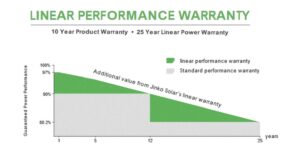Preventative maintenance (PM) includes routine inspection and servicing of equipment to prevent malfunctions and unnecessary production loss. Generally, solar plant developers enter a power purchase agreement (PPA) with host customers to sell power generated at a fix rate and at a pre-determined generation capacity. It is imperative for solar farms to maintain an optimal level of performance, and the Solar Access to Public Capital (SAPC) working group, whose membership includes more than 450 solar developers, financiers and capital managers, and other stakeholders in solar asset management, recommends routine inspection of PV arrays to check all mounting systems and other hardware for corrosion and damage.
Current Process to Determine Faulty PV Modules
Step 1. A PV module specialist checks for hot spots using an infrared camera.

Step 2. An electrician checks the module to ensure all electrical connections are sound.

Step 3. A technician manually records problem areas for further investigation.

According to Velasco, the South Africa country manager at Enertis, a global solar O&M service provider, “Carrying out the site data collection for quality control using infrared imaging across a 75 MW, 200-hectare plant would usually take two or three people at least a month.”[1] Our case study at a 100 MW utility-scale solar farm confirms this estimate.
The U.S. solar market grew 119% in 2016, and with federal tax incentives effective through 2021, the U.S. solar market is projected to surpass 100 cumulative GW by 2021, according to GTM Research, compared to 35.8 GW today.[2] With an exponential level of growth, current methods of inspection are simply not sustainable nor is it economically feasible.
Using Latest Drone Technology to Determine Faulty PV Modules
According to the Electric Power Research Institute (EPRI), drones can perform a variety of tasks – including visual imaging (of modules, wiring, and other plant components), infrared thermography, and vegetation monitoring – that have the potential to update largely manual conventional processes and more efficiently identify and diagnose PV system performance issues.[3]
“The technique involves mounting a high-definition infrared camera on a drone and running the images through an analysis program to detect hotspots that might reveal the presence of faults. Maintenance teams can then visit these hotspot locations directly, without having to survey the entire solar field, which saves on operational costs.” — Jason Deign from Solar Plaza [4]
Case Study: 100 MW utility solar farm
Aerospec was invited to inspect a 100MW solar farm in the U.S. which consist of approximately 450,000 PV modules. With its proprietary image processing technology and detection algorithm, Aerospec successfully identified and located all defective panels while use one-tenth of the time it would take for manual inspections. Aerospec’s inspection report provided immediate actionable items to replace faulty panels and ensure the plant operates at its optimal level.
Overview of the 100 MW solar farm

Aerospec’s drone in action

Technical challenges in using UAVs for solar farm inspection
Using thermal sensor mounted drones to conduct solar inspection has been around for the last few years. However, the industry has not seen a correlation between growth of drone inspection and the growth of solar installations due to one major technical challenge – inability to pinpoint faulty solar panels in a uniformly distributed thermal image including hundreds of panels at a time. (See figure shown below)

With any utility-scale solar plant, the number of PV modules ranges from thousands to hundreds of thousands. Precisely locating a faulty PV module is analogous to finding a needle in a haystack. Using simple GPS and altitude information from a UAV has proven ineffective because thermal imaging cannot be done at a 90-degree angle.
To overcome this challenge, engineers at Aerospec developed a proprietary image-processing software that uses a metadata with advanced computer vision and machine learning algorithm to precisely pinpoint faulty panels. The algorithm has consistently performed at close to 100% accuracy level. Future software applications will include more comprehensive data analytics through pattern recognition and change detection.
Measuring the return on investment
Using its technology, Aerospec determined that the solar farm has 3,500 faulty PV modules, or approximately $1 million in replacement cost, a huge cost-saving by identifying and replacing these modules within the warranty period. In addition, if left unnoticed, these faulty PV modules will result in close to $350,000 annual revenue lost due to generation lost. Most importantly, UAV inspection can be done 6 – 10X faster than traditional methods which gives customers ample time to make corrective decisions.
How Aerospec can help
Our clients are decision makers who require high-resolution data that provides immediate and actionable insights, a nearly impossible task with traditional inspection methods. Focusing on our clients’ needs, our Unmanned Aerial Systems (UAS) with our proprietary software designed specifically for the solar industry fit perfectly in an era that values data analytics. In the future, historical inspection data will be thoroughly analyzed through cross-sectional and time-series comparison to identify performance hurdles and provide predictive analytics.
Beyond just flying a drone or using software, our goal is to provide a service that meets the practical requirements of our customers. We try to understand customers’ needs and develop solutions specifically for their applications.
We have:
- Proven expertise in the Renewable Energy industry
- Reliable integration of hardware and software
- A platform for advanced analytics
- Experts on board (FAA certified UAS pilots, solar researchers, certified thermographers)
- Safety-first mindset, zero incident record to-date




